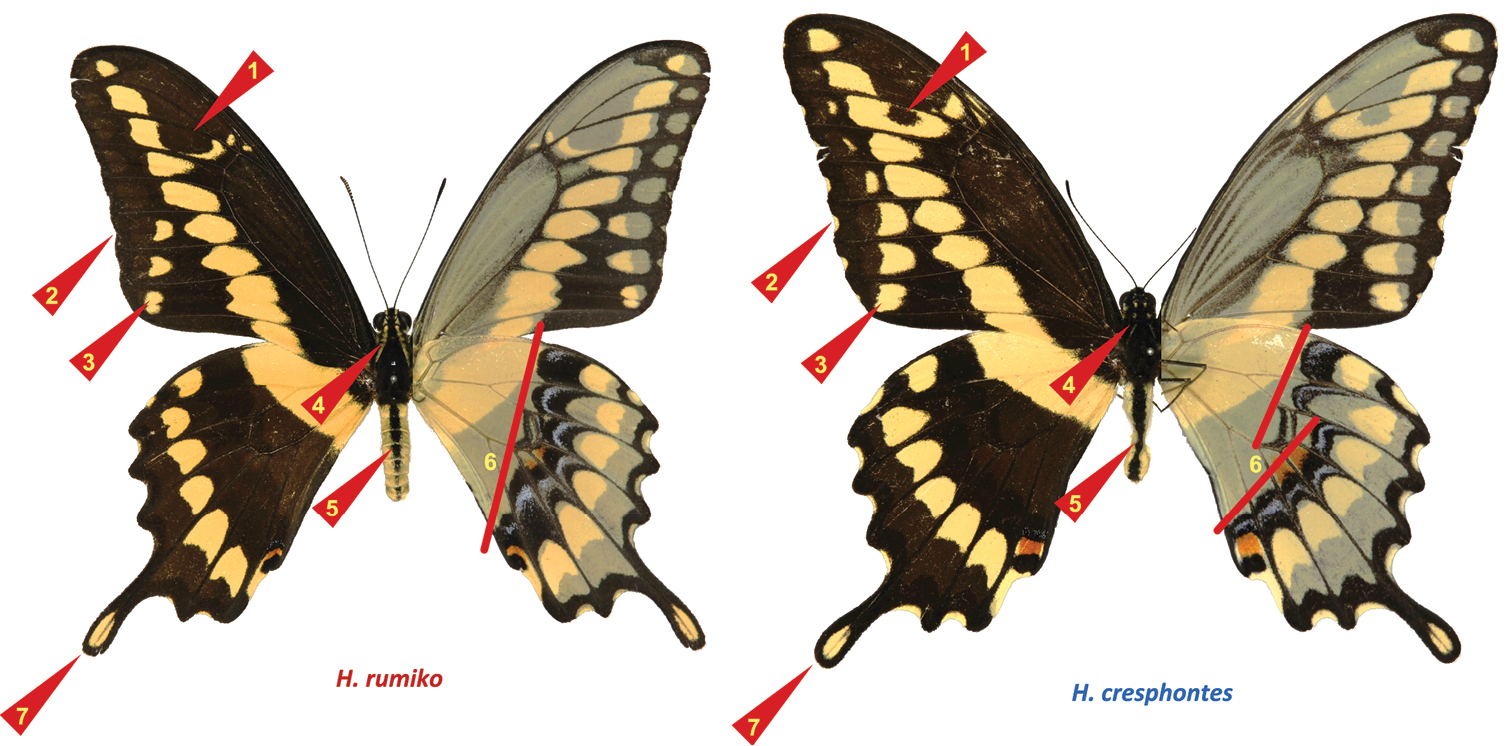
|
||
|
Facies differences between H. rumiko (left, r) H. cresphontes (right, c) indicated by red triangles and lines. These differences are as follows. 1) Dark spot on forewing: (r) almost always large; (c) variable, but often weak and sometimes absent 2) Forewing margin: (r) often straight with smaller or absent marginal spots; (c) strongly scalloped with yellow marginal spots at dips between veins 3) Forewing submarginal yellow spots: (r) smaller rarely more than three; (c) frequently larger, more than three 4) Thorax with: (r) yellow line running from head through patagia to tegulae; (c) spots instead of the line, or just few yellow scales. 5) Abdomen: (r) usually with a fainter dark band; (c) often with solid dark band 6) Inner edge of black discal band on ventral hindwing: (r) mostly straight; (c) usually curved 7) Tail: (r) mostly narrow and relatively longer; (c) typically rounder and wide, shorter. H. rumiko is usually smaller than H. cresphontes, despite being a southern taxon. Due to significant seasonal and individual variation, none of these characters is fully reliable and exceptions exist. The head-neck-thorax line vs. spots (Fig. 11a, A) might be the strongest single character. A combination of characters should be used for reliable identification, e.g., the one shown in Fig. 11E. Many specimens in central Texas exhibit intermediate characters, atypical character combinations, and possible hybrids can be found (Fig. 11E). |